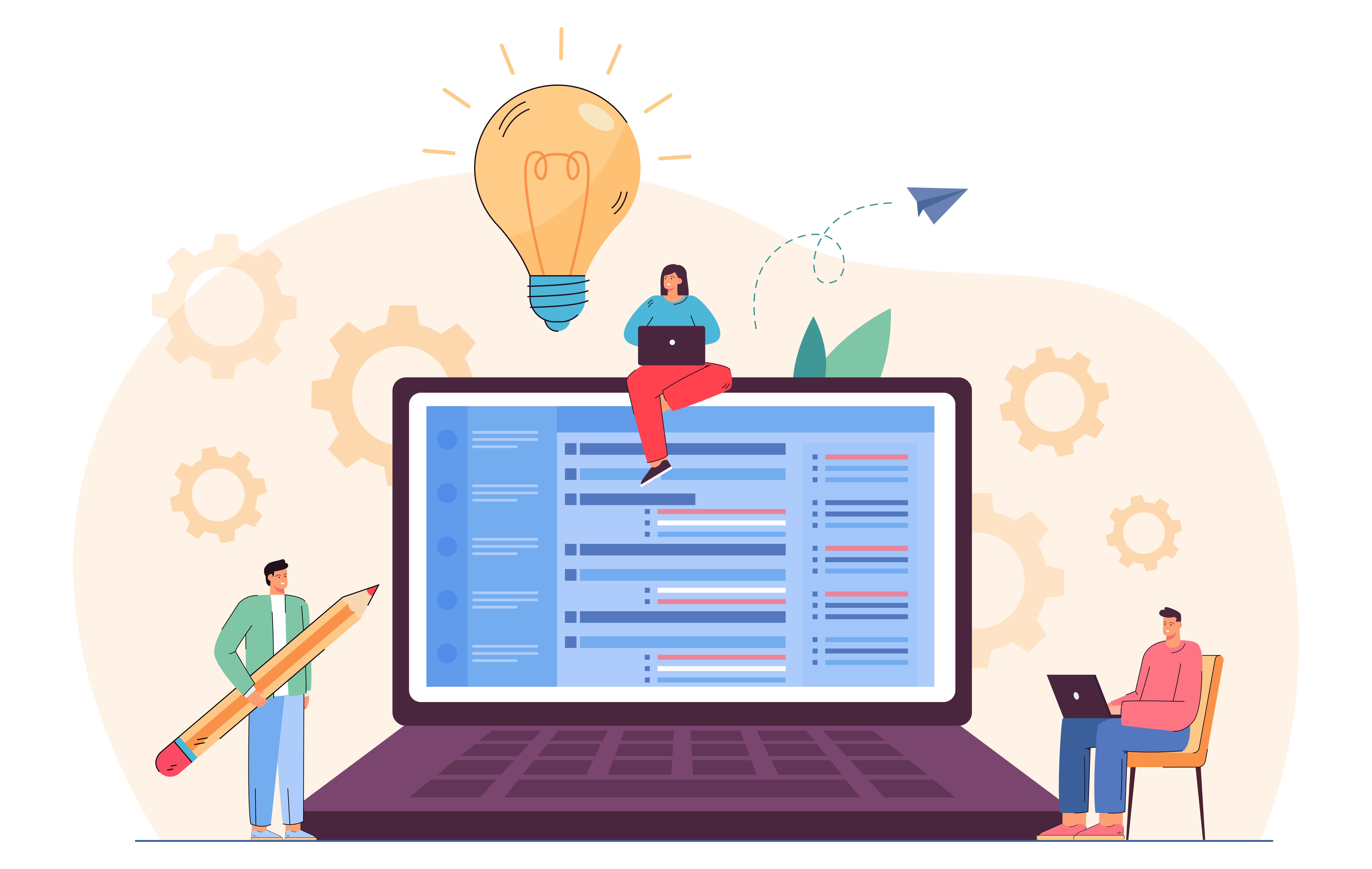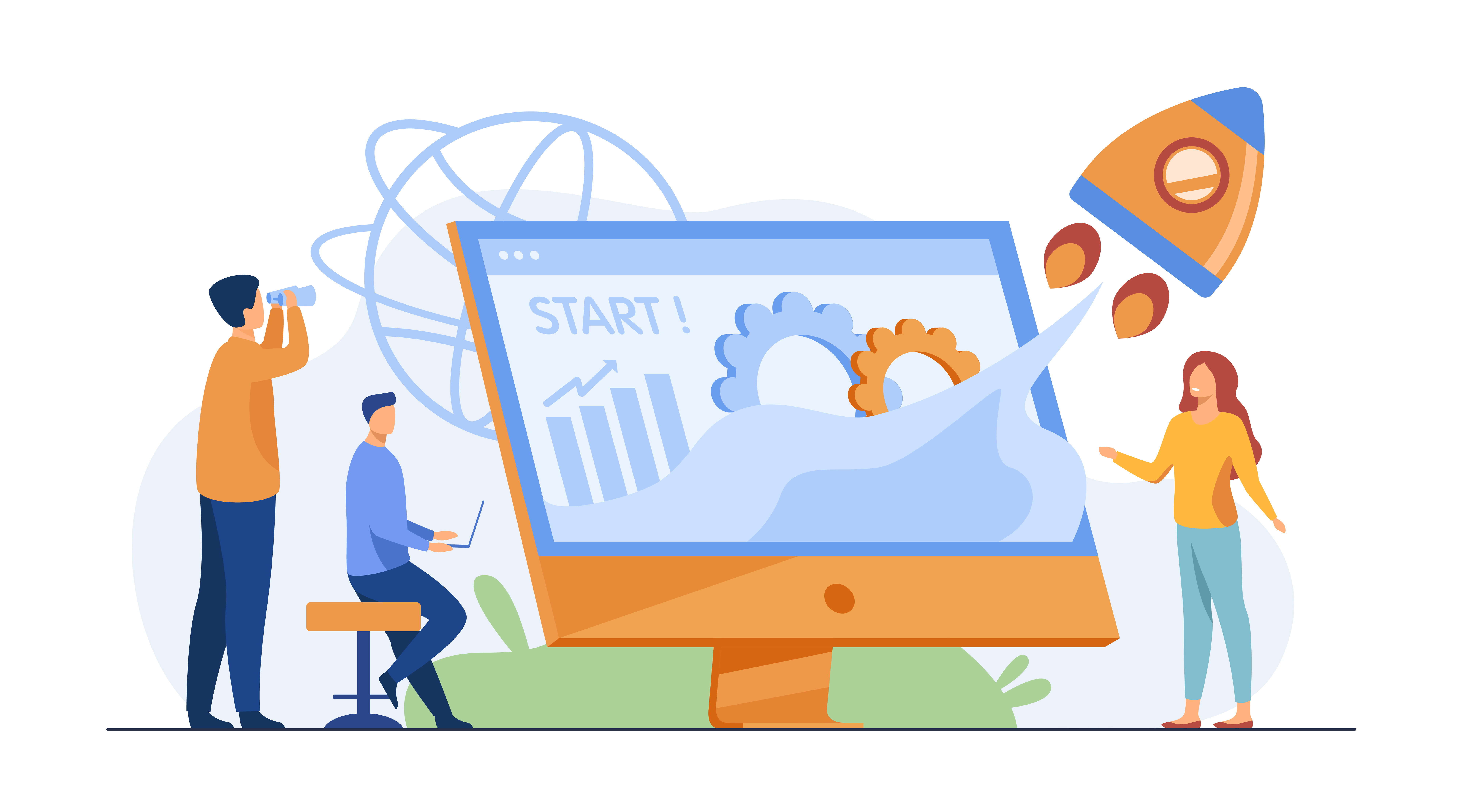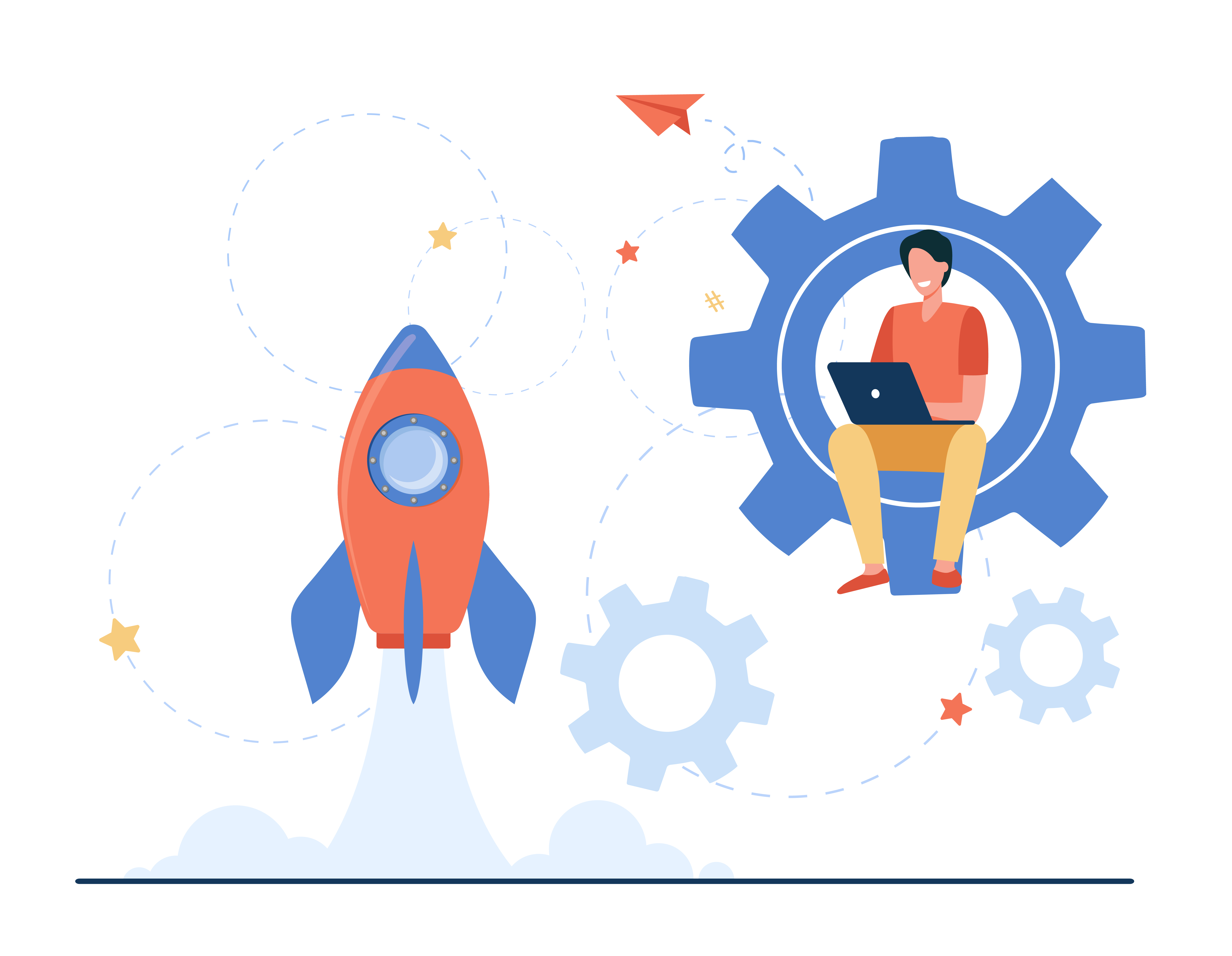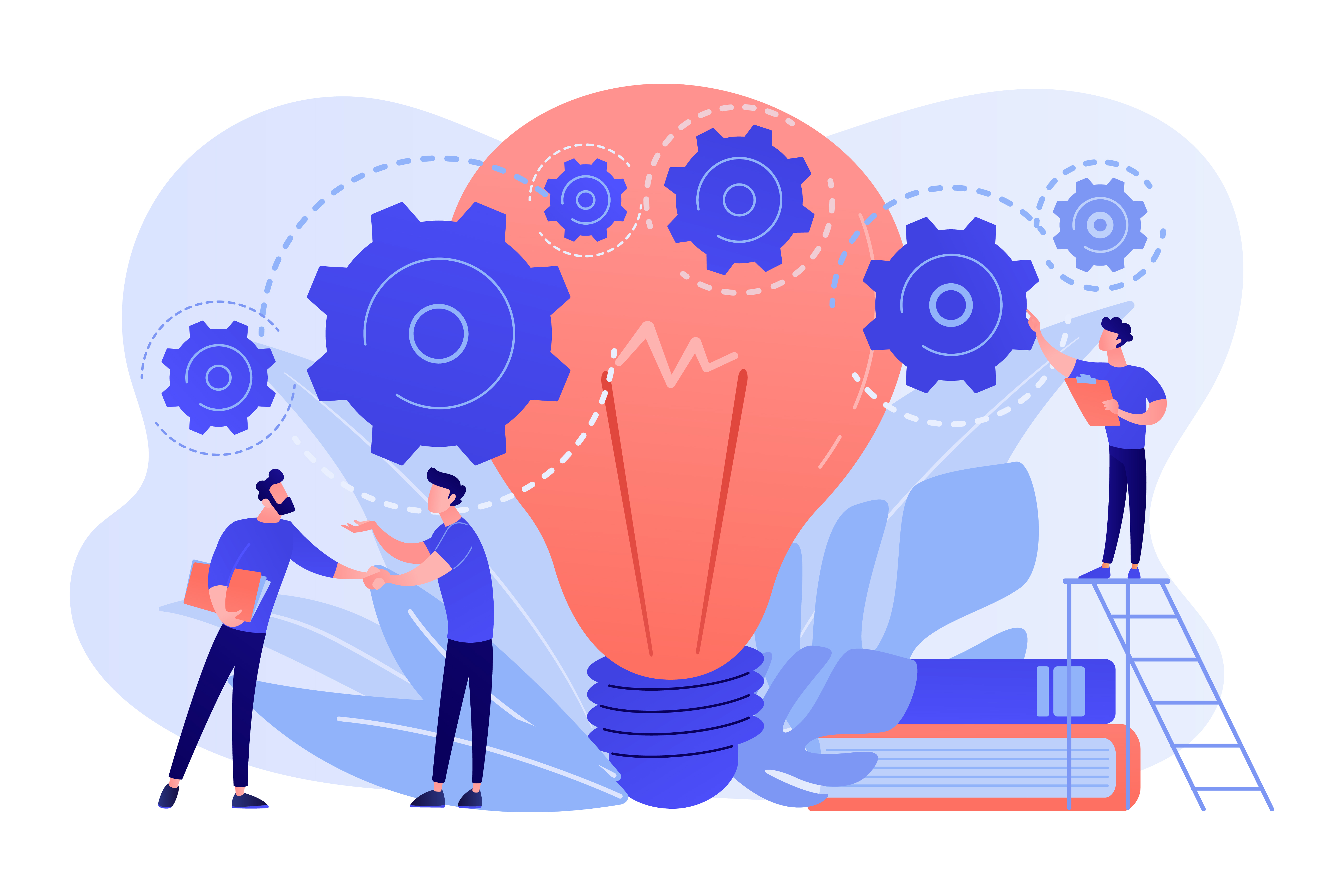As we approach the end of 2024, we at Admiral Studios thought, why not share what we’ve learned this year? The tech world is always changing, especially when it comes to full-stack development. Have you ever wondered what keeps a full-stack developer so busy? It’s not just coding—it’s staying on top of trends that shape the way apps and websites work.
This year brought some big changes. From smarter tools to faster ways of building things, the work we do has become more exciting than ever. Want to know what’s been trending? Let’s talk about it!

Latest Trends in Full Stack Development
The full-stack development sector is moving forward so quickly. Have you ever wondered what’s driving these changes? From advanced tools to amazing features, developers now have access to innovations that make building smarter and faster solutions possible. But first, let’s start with the definition of a full-stack developer—someone skilled in both front-end and back-end development, capable of handling the entire process of creating websites or apps.
By staying up-to-date with these trends, full-stack developers can build more strong, effective, and modern applications. Let’s learn the best trends for the end of 2024.
1. Serverless Architecture
Have you heard about serverless full-stack technology? We think the answer is YES! It’s a simple but powerful way for developers to build applications without worrying about managing servers. Instead of spending time on infrastructure, developers can focus purely on writing code.
So, what makes serverless architecture so great:
- Scalability: If your app suddenly gets a lot of traffic, the system automatically adjusts to handle the load.
- Reduced operational overhead: Developers don’t have to maintain or update servers, saving time and effort.
- Cost-efficiency: You only pay for the resources you use, making it a budget-friendly option.
How does it work? When you upload your code, the cloud provider runs it for you. You don’t need to manage the servers at all. The cloud handles things like security, updates, and scaling, which means you can focus on building features and improving your app.
If you want to try serverless, we recommend you use popular platforms like AWS Lambda, Google Cloud Functions, and Azure Functions. They let you deploy your code easily and take care of the infrastructure for you.
2. Progressive Web Apps (PWAs)
Progressive Web Apps (PWAs) is another trend that combines the best features of both websites and mobile apps. This offers a smooth and fast experience. PWAs use modern web technologies to create an app-like experience, but without the need for users to download anything from an app store. So, what do we have? We have an awesome solution that gives users the best of both worlds.
PWAs offer several key benefits that make them stand out:
- Fast loading: They load quickly, even on slow internet connections. This makes for a better user experience, especially in areas with weak network signals.
- Offline functionality: PWAs work offline, so users can continue using them even when they’re not connected to the internet.
- Push notifications: These apps can send notifications directly to users, keeping them informed and engaged without the need for the app to be open.
- Native-like experience: PWAs feel like native apps, providing a smooth, app-like interface that users love, but they are still accessed through a browser.
How do PWAs work? They are built using web technologies like HTML, CSS, and JavaScript, but they take advantage of service workers and other modern features to deliver app-like performance and functionality.
PWAs are ideal for many types of apps. E-commerce, news, and social media apps, for example, benefit from fast load times, offline support, and notifications. PWAs bring the best of both web and app worlds, offering users a powerful and convenient experience. If you haven’t tried it yet - it’s the right time!

3. WebAssembly (Wasm)
Have you ever wished you could run faster, more complex applications directly in your browser? With WebAssembly (Wasm), that’s now possible. WebAssembly is a technology that lets developers run code written in different languages right in the browser.
So, what makes WebAssembly stand out:
- High performance: Wasm runs code almost as fast as native machine code, making it great for resource-heavy applications.
- Cross-platform compatibility: No matter what device or operating system you’re using, WebAssembly works across all browsers.
- Support for multiple languages: You can run code written in C++, Rust, or Go, which gives developers more flexibility in building applications.
How does it actually work? Wasm modules are compiled into a binary format that the browser can understand and execute. This helps apps run smoothly without additional plugins or downloads.
You can use it for performance-intensive applications. For example, games, video editing, and data visualization are all areas where Wasm is the best. These types of full-stack web development tools often need a lot of computing power, and WebAssembly helps them run faster and more efficiently in the browser.
4. Artificial Intelligence (AI) and Machine Learning (ML)
Artificial Intelligence (AI) and Machine Learning (ML) are everywhere, from the apps we use to how businesses operate. But what exactly are they, and why are they so important?
The benefits of AI and ML are clear and impactful:
- Automation: AI and ML can handle repetitive tasks, saving time and allowing people to focus on more important work.
- Improved decision-making: These technologies help businesses analyze large amounts of data quickly, leading to better decisions.
- Personalization: AI can offer personalized experiences, like recommending products based on past behavior or interests.
- Efficiency: With AI and ML, tasks that once took hours can be completed in seconds, improving productivity.
- Innovation: AI and ML open doors for new solutions in various industries, from healthcare to transportation.
How do they actually work? AI refers to machines or software that can imitate human intelligence. This means that AI can do tasks like recognizing speech, making decisions, and understanding images. It’s like teaching a computer to think and solve problems, much like we do.
Machine Learning, on the other hand, is a subset of AI. It helps machines learn from experience. In simple terms, ML helps computers improve at tasks without being programmed for each one. For example, when you watch videos on YouTube, the platform recommends new ones based on what you've watched before. This is ML at work - it learns your preferences and suggests content based on that.
These full-stack technologies are already popular in healthcare for faster diagnoses, in finance for detecting fraud, and even in self-driving cars (because who needs a driver when your car can do the thinking for you, right?) As technology improves, AI and ML will continue to impact almost every part of our lives.
5. Internet of Things (IoT)
The Internet of Things is the future we all dreamed about. Simply put, IoT connects everyday objects to the internet, allowing them to send and receive data. This is what makes devices smarter and more responsive.
The benefits of IoT are wide-ranging:
- Increased efficiency: IoT can automate processes, reducing the need for manual effort. This makes tasks like adjusting temperature or managing security easier.
- Automation: Many IoT devices work automatically, saving time and effort. For instance, smart lights can turn on when you enter a room and turn off when you leave.
- Better decision-making: The data collected by IoT devices can provide valuable information that helps businesses or individuals make informed decisions.
How does it work? IoT devices are equipped with sensors and software that help them collect data. This data is then transmitted over the internet, where it can be processed and analyzed to provide useful insights. For example, your smart thermostat collects data on the temperature in your home and adjusts itself based on your preferences.
We use IoT in smart homes, where devices like thermostats, security cameras, and lighting systems work together to make life more comfortable and secure. Full-stack technologies help in building applications that allow users to monitor and control these devices from anywhere. Connected cars use IoT to track driving patterns and improve safety. In industrial automation, IoT devices help monitor equipment and predict when maintenance is needed, preventing breakdowns and saving money.

6. Low-Code Development: Simplifying the Process
Low-code development is changing the way we build applications. So, what exactly is low-code? It's a way to create software using a visual interface instead of writing a lot of code. This means that developers can focus on design and functionality without having to deal with complex programming languages.
What are the benefits of using low-code:
- Faster development cycles: By using ready-made templates and drag-and-drop features, full-stack developers can create applications much faster than traditional coding.
- Reduced development costs: Since it takes less time to build, businesses spend less on development.
- Increased accessibility: Even people without coding skills can now create useful apps, allowing non-technical users to build solutions.
- Easier collaboration: Teams can work together more easily on projects because the platform allows visual design, which is easier for everyone to understand.
- Flexibility: Low-code platforms can be adapted to create a variety of apps for different purposes.
How does it work? Low-code platforms give you the tools to design and build apps without writing much code. You can easily create forms, buttons, and workflows with just a few clicks. This makes it easier for teams to work together and launch apps quickly.
Low-code is perfect for certain uses. For example, it's great for rapid prototyping—quickly creating a working version of an app to test ideas. It's also useful for building internal tools for businesses, such as employee portals or inventory management systems. It's like putting together IKEA furniture—you don’t need to be a pro, but you’ll still have something functional at the end (hopefully with only a few leftover screws).
7. Blockchain Technology
Blockchain is the future of full-stack developers. If you're not involved yet, it's time to get on track, or you'll miss out. At its core, it’s a secure, transparent, and unchangeable way to record data.
What makes blockchain special:
- Security: Transactions are encrypted, making it difficult for hackers to tamper with data.
- Transparency: All participants can see the data, increasing trust.
- Immutability: Once data is recorded, it cannot be changed or erased, providing accurate records.
- Decentralization: No central authority controls the data, reducing the risk of corruption.
- Efficiency: Transactions are faster and more reliable due to automation and transparency.
How does it work? Think of it as a digital ledger that is shared across many computers. This means no single computer has control over the data. Each time a transaction happens, it gets recorded in a "block," and these blocks are linked together, creating a "chain" of information.
Blockchain has many uses. It’s most famous for cryptocurrency, like Bitcoin, where it helps keep transactions safe and honest. But it doesn’t stop there. In supply chain management, blockchain helps track goods as they move from one place to another, making the process more reliable. It’s also used in identity verification, guaranteeing that personal information stays safe and accurate.
8. GraphQL
Unlike traditional methods, GraphQL allows clients to request only the specific data they need, making data fetching much more efficient. This can save time and reduce the amount of data transferred, especially in mobile apps or other devices with limited bandwidth.
Benefits of GraphQL:
- Efficient data fetching: Clients can request only the data they need, cutting down on unnecessary data transfer.
- Flexible query language: Developers have full control over the structure of the data they request.
- Reduced API overhead: Fewer API calls are needed, which makes applications faster and more responsive.
How does it work? With GraphQL, you don’t have to deal with over-fetching or under-fetching data. Instead of making multiple API calls for different pieces of information, a client can make one request and get exactly what it needs. This reduces the workload on both the client and server.
GraphQL is one of the latest trends in full-stack development with its efficiency and flexibility. It is increasingly used in mobile apps, real-time applications, and microservices architectures. These areas benefit greatly from GraphQL’s ability to handle complex data requirements more efficiently.

9. Edge Computing
Instead of sending all the data to a distant cloud server for processing, edge computing keeps the processing close to the source of the data. This means faster responses and better performance for real-time tasks.
Benefits of edge computing:
- Reduced latency: Data is processed locally, leading to quicker responses.
- Great performance: Real-time applications work more efficiently without delays.
- Better data privacy: Sensitive data doesn’t need to leave the device, making it more secure.
How does it work? By processing data near where it’s generated, edge computing reduces the need for long-distance data transfer. For example, instead of a car sending all its sensor data to a faraway cloud, it processes the information right there in the car, making decisions almost instantly.
Edge computing is perfect for use cases that require quick decisions, such as autonomous vehicles, IoT devices, and real-time analytics. It’s a growing field that’s helping developers create full-stack web applications that are faster, smarter, and more secure. By processing data locally, edge computing is pushing technology to new heights.
10. Cybersecurity
Cybersecurity is keeping your data safe from unwanted access and cyber-attacks. As more people use the internet for everything, protecting sensitive information has become more important than ever.
Benefits of cybersecurity:
- Protects sensitive data: It keeps personal and financial details safe from hackers.
- Prevents unauthorized access: Only trusted users can get into systems and applications.
- Mitigates cyber threats: Helps reduce the risk of attacks like viruses or data breaches.
How does it work? Cybersecurity uses different tools and strategies to keep systems secure. These include encryption, which makes data unreadable to anyone without the key, firewalls, which block harmful traffic, and intrusion detection systems, which spot any unusual activities in the network. Regular security audits also help find any weaknesses and fix them before they can be exploited.
Cybersecurity is very important for web and mobile applications, especially those that handle sensitive user data. With the right security measures in place, you can rest assured that your information stays protected.
With tools and platforms improving every year, full-stack developers will be able to create even more efficient and user-friendly applications. Keeping up with these trends will help developers stay ahead in the field and create innovative solutions for tomorrow’s challenges.
Contents
1. Latest Trends in Full Stack Development
2. Serverless Architecture
3. Progressive Web Apps (PWAs)
4. WebAssembly (Wasm)
5. Artificial Intelligence (AI) and Machine Learning (ML)
6. Internet of Things (IoT)
7. Low-Code Development: Simplifying the Process
8. Blockchain Technology
9. GraphQL
10. Edge Computing
11. Cybersecurity
Back to the top
